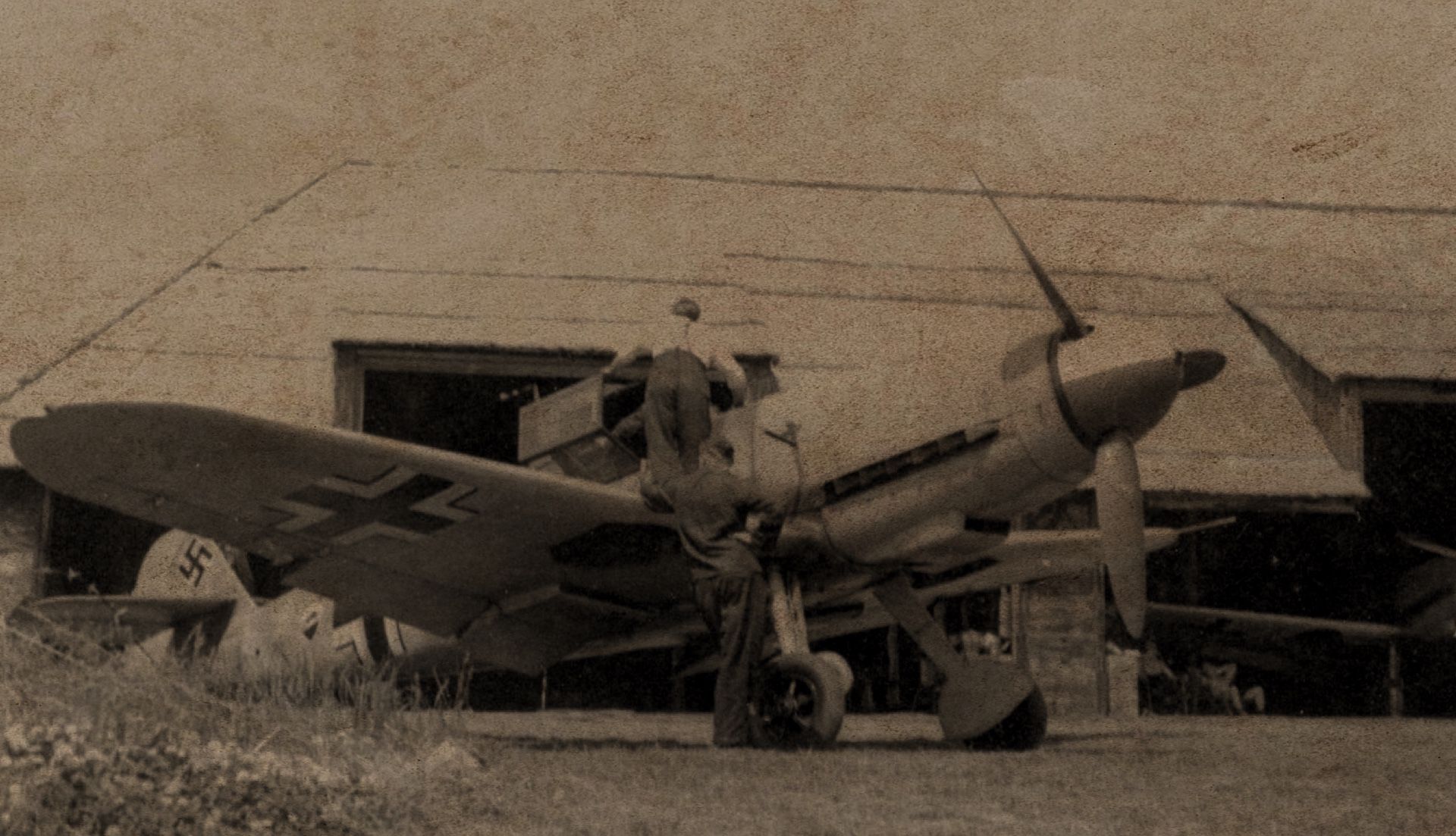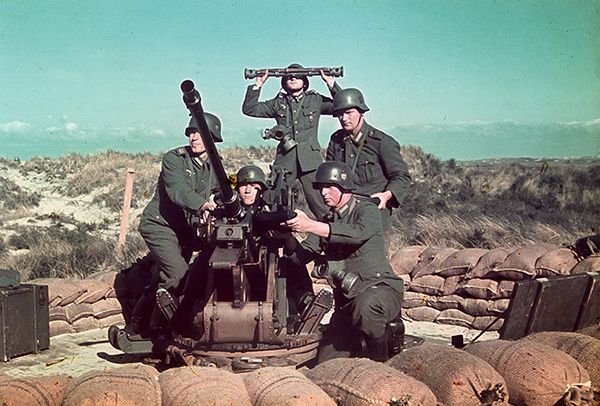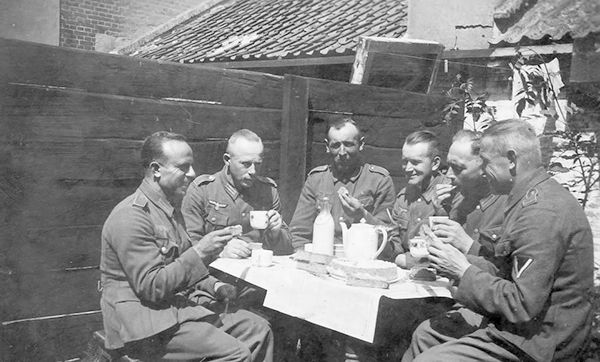A PEACEFUL WAR
It would be going too far to conclude that Texel was a paradise during the Second World War. But few signs of war violence were apparent other than the air battles, there was plenty to eat and drink, and it was often felt that Hitler had not sent his most fanatical soldiers to the Netherlands’ largest Wadden Island. Relations with the inhabitants were generally quite good.

DEFENCE ARTILLERY
Texel lay along the route of the Allied planes bombarding Germany’s major cities. Dozens of pilots took advantage of the night-time darkness to pass over the island to drop their bombs several hundred kilometres to the east. This frequently resulted in encounters with German anti-aircraft guns, causing many bombers to crash. Fortunate airmen survived and were captured. Others perished and were buried in Den Burg.

GERMAN ARMY
Islanders were also forced to work for the occupying forces. Many young women had to peel potatoes for the German army, while men were drafted in to build the many bunkers in the dunes. In a more direct consequence, in November Texel suffered the deportation of some 800 young male residents. They had to dig trenches and anti-tank ditches for the Germans in Assen on the Dutch mainland, and its surrounding area. For a long time their fate was uncertain, but finally they all returned alive in 1945.


STILL WARTIME ON TEXEL…
Nevertheless things were relatively quiet on Texel. Other than the air battles there was little sign of war violence, and there was plenty to eat and drink. The fact that ‘luxury’ products like coffee, tea and tobacco were rationed ‘on the coupon’ was no more than a discomfort. It was also often felt that Hitler had not sent his most fanatical soldiers to the Netherlands’ largest Wadden Island. Relations with the inhabitants were generally quite good.
But then, while a major part of the Netherlands had already been liberated, war broke out again on Texel...




